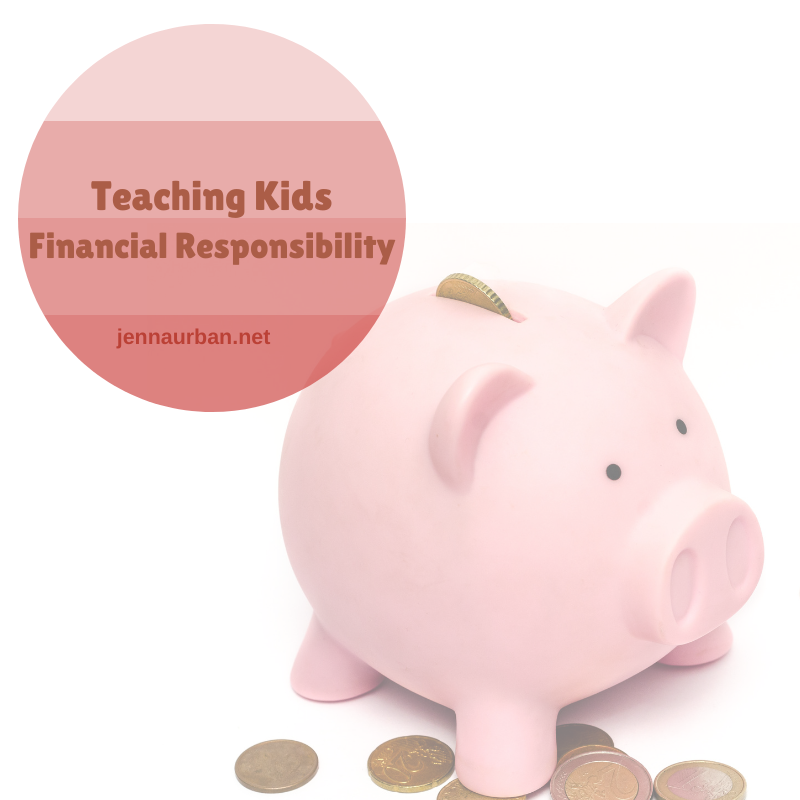What Kids need to know about Financial Responsibility

As savvy as kids are in this Digital Age, they remain dangerously uneducated about money and clueless about financial responsibly. How kids handle their monetary holiday gifts and piggy bank savings is a great way to get started. As a parent, you have many important things to teach them. First and foremost should be the importance of raising money confident kids and not dependent adults. Let’s be honest, we don’t want our kids living in our basements when they are 30! When I talk to high school students about their finances many reply that they are dependent on their parents. How are they going to go off to college without knowing this important life skill?
What do kids need to know about financial responsibility?
What’s the right age to start? According to moneycrashers.com, the right age to introduce financially literacy is around age 5, but don’t go overboard. Childhood shouldn’t be inside counting coins, childhood is about playing dress up, getting dirty in the backyard and playing with friends. Let kids be kids, but that doesn’t mean that you should be setting a bad example and biting more than you can chew with your own finances. Here are a few ways to guide them to become financially “literate.”
Holiday/Birthday Savings
Come up with an agreement before the holidays or special occasions, like a split or a third. Whatever You feel comfortable with in your house, but allow kids to keep some of their money to become financially responsible for spending. The most important thing at the beginning is to make saving fun.
TALKING TO KIDS ABOUT A BUDGET
Using envelopes or money jars are a terrific way to introduce savings concepts to kids by separating their money into groups: Money to Save, Money to Spend , and Money to Give. It’s a good idea to talk about some savings goals as well both short-term and long-term, which can also be an envelope or jar. A short-term jar might have a pictures of a specific toy, while the long-term jar might have a picture of a trip or of a college. Teach your child to set aside money for short-term and long-term goals, and have another jar or envelope for spending on everyday items. It’s hard to financially keep up with 21st century kids, so if there is something that they want it’s OK to let them foot the bill.
KIDS CREATE THEIR OWN BUSINESS
One way to encourage entrepreneurship is to have kids to have their own lemonade stand. Really, there are only a few necessities needed to make a stand. Lemonade, cups, and kids! The location of the stand is also really important because you want to set up in a high traffic area, but also an area that is safe for kids. Kids that make a lemonade stand can really understand the meaning of “hard earned money.”
Teaching your children how to save is an important step to prepare them for financial responsibility and a secure future. But it won’t go very far if you don’t “practice what you preach.” Most kids don’t know the difference between debit and credit cards. For example, my children think that any time we need money, that we can just visit the ATM machine. It’s important to explain how the money gets in the ATM machine and the same thing goes for using credit cards. The use of plastic all the time could send mixed signals, so it’s important not to ignore the questions they may have about money. In other words, you are constantly modeling money habits, which they will catch more than you think.
Ultimately, saving is a good thing and positive financial habits early on in life help mold our future habits. The new year brings a perfect opportunity to teach kids the skills to be equipped to make smart money choices, especially with their newfound fortune. Because it’s never too early to teach the value of money and the importance of saving.
Financial Responsibility Resources for Kids
Banzai Program sponsored by Penn East Federal Credit Union
Banzai is free, online financial literacy for students of all ages. It’s interactive and fun. Over 60,000 math, business, family and consumer science, and computer teachers have joined the program nationwide. Banzai focuses on building credit, borrowing, budgeting, spending, setting goals. This is a wonderful program that I have been using for years in my classroom with students in grades 4-6. They start by learning the important terms and with limited choices, but continue through the program to make decisions about saving for future.
Use code 8DEXBC to join as a student.



Leave a Reply